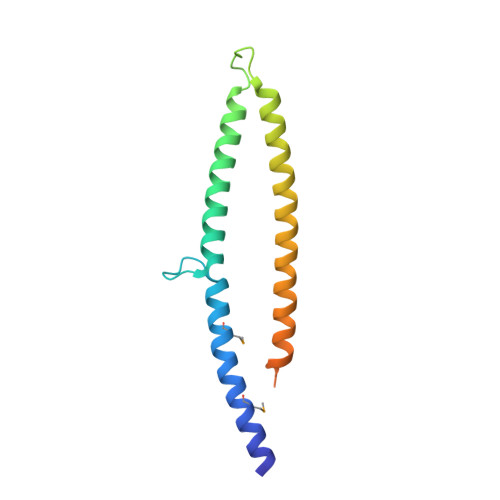Rearrangements of alpha-helical structures of FlgN chaperone control the binding affinity for its cognate substrates during flagellar type III export
Kinoshita, M., Nakanishi, Y., Furukawa, Y., Namba, K., Imada, K., Minamino, T.(2016) Mol Microbiol 101: 656-670
- PubMed: 27178222
- DOI: https://doi.org/10.1111/mmi.13415
- Primary Citation of Related Structures:
5B3D - PubMed Abstract:
The bacterial flagellar type III export chaperones not only act as bodyguards to protect their cognate substrates from aggregation and proteolysis in the cytoplasm but also ensure the order of export through their interactions with an export gate protein FlhA. FlgN chaperone binds to FlgK and FlgL with nanomolar affinity and transfers them to FlhA for their efficient and rapid transport for the formation of the hook-filament junction zone. However, it remains unknown how FlgN releases FlgK and FlgL at the FlhA export gate platform in a timely manner. Here, we have solved the crystal structure of Salmonella FlgN at 2.3 Å resolution and carried out structure-based functional analyses. FlgN consists of three α helices, α1, α2 and α3. Helix α1 adopts two distinct, extended and bent conformations through the conformational change of N-loop between α1 and α2. The N-loop deletion not only increases the probability of FlgN dimer formation but also abolish the interaction between FlgN and FlgK. Highly conserved Asn-92, Asn-95 and Ile-103 residues in helix α3 are involved in the strong interaction with FlgK. We propose that the N-loop coordinates helical rearrangements of FlgN with the association and dissociation of its cognate substrates during their export.
- Graduate School of Frontier Biosciences, Osaka University, 1-3 Yamadaoka, Suita, Osaka, 565-0871, Japan.
Organizational Affiliation:

















